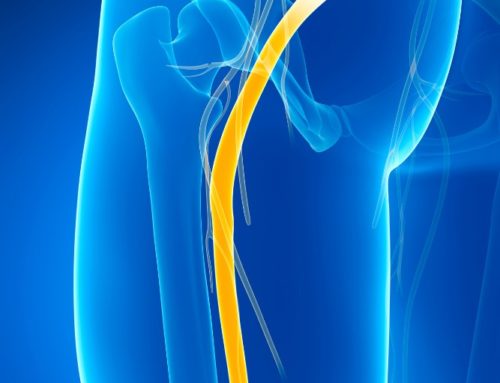A frozen shoulder reduces mobility and can be painful, so if you think you have this condition see a doctor. Also called adhesive capsulitis, it causes stiffness in the shoulder, making it difficult to perform some everyday tasks. However, over time, and with personal perseverance, it is possible to relieve symptoms through physical therapy.
What Is The Main Cause Of A Frozen Shoulder?
It is often difficult to pinpoint the precise cause of a frozen shoulder, but an inflammation is usually involved. Older people tend to be more prone to this disability, so there may be a number of related causes.
A frozen shoulder may occur after your arm has been in a sling, following an injury or surgery. Repetitive strain or overuse injuries are thought to be a common cause. This is because the muscles and tendons that stabilize the shoulder and control its movements can degrade over time.

Enforced immobility after a stroke or surgery may also lead to the development of this condition. People with thyroid disorders, Parkinson’s disease or diabetes are thought to be at greater risk of a frozen shoulder.
What happens if it is left untreated?
If left untreated this condition can worsen, making it painful to make certain movements with your arm. Pain and restricted shoulder movement can lead to increased stress and anxiety, so don’t underestimate the mental health aspect. Poor posture may be both a cause and an effect of frozen shoulder, so seek advice on this aspect, too.
The first thing to do is to get a thorough assessment from a clinician or doctor. This may involve X-rays or MRI scans, with the aim being to pinpoint where the problem lies. Once you have a clear diagnosis, your doctor may recommend physiotherapy. But don’t try to do this on your own at home as you may make the condition worse. On rare occasions a doctor may recommend surgery, which may not always be successful.
What is the best treatment for a frozen shoulder?
The primary aim of treatment is to relieve pain and help you regain lost mobility in the shoulder. Your doctor may recommend an anti-inflammatory medication or a corticosteroid injection into the soft tissues of shoulder. Other options include the regular application of icepacks or heat packs on the affected area.
However, the most common treatment option is physical therapy. This will involve stretching and strengthening exercises which, if done safely, can help unlock a frozen shoulder. For example, “pendulum stretch” is where you lean over, while standing and allowing your arm to hang down a little. And then just gently swing your arm, gradually increasing its diameter.
Frozen shoulder and pain
Frozen shoulder can cause a lot of pain and may not go away on its own. However, there are good treatments for this condition. So, make sure that you seek medical assistance and get the treatment in a timely fashion. We at Haym Salomon Home for Nursing & Rehabilitation in Brooklyn NY are specialized in any joint-related condition. Contact us for more information.
This content comprises informative and educational resources only and can not be considered as a substitute for professional health or medical guidance. Reliance on any information provided in this article is solely at your own risk. If you have any inquiries or apprehensions about your medical condition or health goals, talk with a licensed physician or healthcare provider.






Leave A Comment